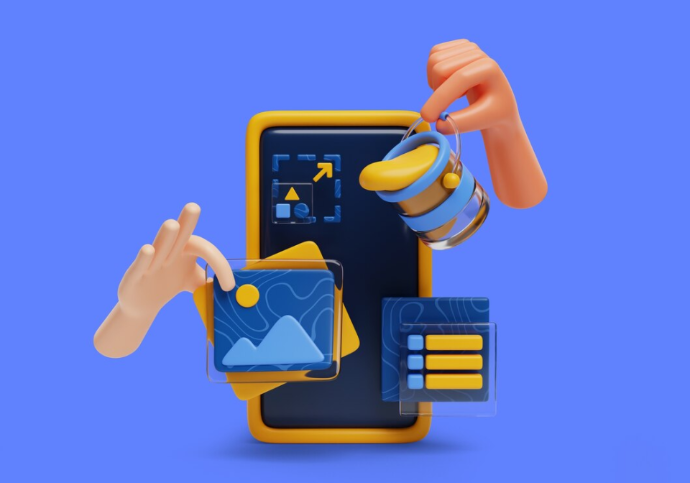Table of Contents
- Summary
- Introduction
- Why Build a Facebook-Like App?
- Increasing Demand
- Market Growth
- Business Opportunities
- Key Features of a Facebook-Like App
- User Registration and Profile Management
- News Feed and Timeline
- Friend Requests and Connections
- Messaging and Chat
- Media Sharing
- Push Notifications
- Groups and Communities
- Events and Calendar
- Search and Explore
- Admin and Moderation Tools
- Optional Features
- Technology Stack to Develop Facebook-Like App
- Frontend
- Backend
- Database
- Cloud and Storage
- Security
- Steps to Develop Facebook Like App
- Understand Your Audience
- Design:
- Planning:
- Choose a Platform
- Coding:
- Testing:
- Promote Your App
- Launch:
- Cost to Develop Facebook Like App
- Estimated Cost
- Hourly Developer Rates
- Monetization Opportunities
- In-App Advertisements
- Subscription Plans for Premium Features
- Paid Events or Groups
- In-App Purchases
- Freemium Model for Basic vs. Premium Users
- Factors Affecting Cost
- Platform Choice
- Feature Complexity
- Customization and Integrations
- Development Team Location and Rates
- Why Choose QSS Technosoft for Facebook-Like App Development?
- Expertise
- Skilled in AI/ML Integration
- Strong Data Security and Encryption Practices
- Proven Track Record
- End-to-End Support
- Conclusion
- FAQs Section
Summary
This blog provides a complete guide to developing a Facebook-like app, covering everything from planning, designing, coding, and testing to ensure a successful launch. It highlights the key features such as news feed, messaging, media sharing, groups, and privacy tools, along with the technology stack required for scalability and security. The blog also breaks down the cost of development, monetization strategies, and factors affecting budget. Partnering with QSS Technosoft ensures expert development, strong data security, AI/ML integration, and end-to-end support for building a scalable and engaging social media platform.
Introduction
The Facebook Like app is a powerful tool for companies to build customer relationships and generate business. It allows customers to like, comment on, and share posts from the company's page or profile. This helps the company create interest in its products or services by engaging with potential customers through social media.
The ability to track likes, comments, and shares, gives companies better insights into customer behavior and preferences. With the right strategies in place, businesses can use the Facebook Like app to increase brand awareness, build relationships with customers and improve their bottom line.
QSS Technosoft is a trusted backend development partner specializing in social media app solutions. Their expertise ensures the creation of engaging, reliable, and scalable social media platforms tailored to your business needs.
In this blog, we’ll walk you through the essential steps to develop a Facebook-like app and also cover planning, designing, coding, and testing your app to ensure a smooth launch.
Why Build a Facebook-Like App?
Increasing Demand
There is a growing need for social connectivity and online engagement as more people seek to connect with friends, family, and communities digitally. A Facebook-like app meets this demand by providing a platform for interaction and sharing.
Market Growth
The social networking market continues to expand rapidly, with an increasing user base worldwide. Building a Facebook-like app allows you to tap into this growth and reach a broad audience eager for innovative social experiences.
Business Opportunities
Such an social network app opens multiple monetization avenues, including advertising, subscriptions, in-app purchases, and other revenue streams. These opportunities make developing a Facebook-like app a potentially profitable business venture.
Key Features of a Facebook-Like App
User Registration and Profile Management
Users can sign up or log in using email or phone number, ensuring secure access. Profile creation allows personalization with photos, bios, and interests. Privacy controls enable users to manage who can see their information and posts.User profile creation allows users to upload a profile picture and write a bio.
News Feed and Timeline
A personalized news feed displays updates, posts, and shared video content from friends and followed pages. The timeline organizes posts chronologically for easy browsing. Interactive elements like likes, comments, and shares encourage user engagement.
Friend Requests and Connections
Users can send and receive friend requests to build their network. Connection management includes accepting, declining, or blocking requests. This feature fosters social interaction and community building.
Messaging and Chat
One-on-one and group chat options provide seamless communication, including private messaging for secure and direct conversations. Voice and video call capabilities enhance real-time interaction. Messaging supports sharing media and emojis for richer conversations.
Media Sharing
Users can upload photos, videos, and files to share with friends or groups. Privacy settings control who can view or download shared media. This feature supports rich content sharing to keep users engaged.Users should be able to post text, photos, and videos with simple tools and filters for content creation and sharing.
Push Notifications
Real-time alerts notify users about new messages, likes, comments, and friend requests. Customizable notification settings allow users to manage their preferences. Push notifications help maintain active user participation.
Groups and Communities
Users can create and join groups based on shared interests or causes. Group management tools allow admins to moderate content and manage members. Communities foster deeper engagement around specific topics.Community-building features like groups, forums, and events can increase user retention.
Events and Calendar
Users can schedule events and send invitations to friends or groups. RSVP tracking helps organizers manage attendance. Integration with calendars provides reminders and event updates.
Search and Explore
Advanced search functionality helps users find friends, pages, groups, or trending content. Filters and sorting options improve search accuracy. Explore features surface popular or recommended posts to users.
Admin and Moderation Tools
Admins have tools to monitor content and enforce community guidelines. User management features enable banning or restricting problematic accounts. These tools maintain a safe and respectful environment.
Optional Features
Additional enhancements may include chatbots for automated support and payment integration for in-app purchases. Augmented reality (AR) filters add fun visual effects to photos and videos. AI-based recommendations personalize user experience by suggesting relevant content.A real-time chat function is essential for private one-on-one and group conversations.
Empower Your Digital Vision with an Award-Winning Tech Partner
QSS Technosoft is globally recognized for innovation, excellence, and trusted delivery.
- Clutch Leader in App Development 2019
- Ranked Among Top 100 Global IT Companies
- Honored for Cutting-edge AI & Mobility Solutions
Technology Stack to Develop Facebook-Like App
Frontend
React Native, Flutter, Swift, and Kotlin are popular choices for building the frontend of a Facebook-like app. These technologies support cross-platform development as well as native apps, ensuring a smooth and responsive user interface across mobile devices.
Backend
Node.js, Django, and Go are commonly used backend development technologies that provide real-time updates and scalability. They handle server-side logic efficiently, enabling seamless communication and data processing for social networking platforms.
Database
PostgreSQL and MongoDB are preferred databases for storing structured and flexible data. They support the complex data requirements to create a social media app, including user profiles, posts, and interactions.
Cloud and Storage
Cloud services like AWS, Firebase, and Azure offer scalable hosting and storage solutions. These Google Cloud platforms ensure your app can handle growing user bases and large volumes of multimedia content without performance issues.
Security
Implementing strong security measures such as data encryption, SSL protocols, and two-factor authentication (2FA) is crucial to protect user information and ensure secure communication. Regular security audits and updates further enhance the app's resilience against potential threats. These security measures safeguard user information and maintain trust in your social media app.
Steps to Develop Facebook Like App

Understand Your Audience
The first step in creating a successful Facebook Like App is to understand your target audience. This includes who they are, what their interests are, and how you can best provide value to them. Consider what motivates them, what they are looking for, and how you can make the most of their time spent on your app. For example, if you know that your target audience is young adults who like to share photos and videos, it would be wise to create a mobile application with features specifically designed for sharing visual content.A niche could involve specific professional communities or a photo-sharing app for food enthusiasts.
Design:

The first step in developing a Facebook like app is to design it. This includes defining the purpose of the app, what features it will have, and how users will interact with it. You should also decide which platforms you want to build for (e.g., iOS or Android) and if you'll use any third-party services such as databases or APIs.
When designing the app, consider how it will look and feel, what types of content it can contain (e.g., photos, videos, text), how users will navigate through it, and if there are any special features or functions you want to add. It's also important to keep in mind the target audience for the app and how you will market it.
Also Read: Guide & Cost to Develop WhatsApp Like App
Planning:
Once you've designed the basics of your app, it's time to start planning out its development. This includes setting deadlines for completing each step, creating a timeline for the project, and budgeting for resources such as app developers and designers. It's also important to decide how you're going to monetize the app (e.g., through ads, in-app purchases, or subscriptions).
When planning the development process, it's also important to identify any risks that may arise along the way and create strategies for addressing them. This includes setting milestones so you can track progress and adjust the course if necessary. Additionally, selecting the right tech stack is crucial at this stage, as it affects the app's performance, scalability, and overall development cost.
Choose a Platform
Once you have determined the type of audience you are targeting, it is important to decide which platform will be most suitable for your app. The most popular platforms available include iOS, Android, and the Web. Each platform has its own set of advantages and disadvantages and must be weighed carefully in order to determine the best fit for your application. For example, iOS is usually chosen for applications that require a high degree of user interaction, while Android is better suited for applications that require extensive integration with device hardware. Choosing the right tech stack for your app platform is crucial, as it influences performance, scalability, and development cost. It is essential to collaborate with experienced app developers who can guide you in selecting the best platform and technology stack for your project.
Also Read :Guide to Develop Instagram Like App
Coding:

Once you've planned out the development of your app, it's time to start writing code. This includes creating wireframes for the user interface and designing the database. It also involves writing code using appropriate programming languages for any special features or functions, such as notifications, search, or other API integrations.
When coding your app, it's important to consider the user experience and ensure that features are easy to use and intuitive. This includes testing the code regularly to make sure everything is working properly.
Testing:
Once you've coded the app, it's time for testing. This involves creating test plans that detail how the app should work, running tests to make sure it meets user expectations and fixing any bugs or issues.
It's also important to create a strategy for collecting feedback from users so you can continue to improve the app over time. For example, you can use surveys, polls, or even A/B testing to get insights into what works and what doesn't. Throughout this phase, ensure that your tech stack supports efficient quality assurance and seamless integration with other components.
Promote Your App
Once your Facebook Like App is built and ready to launch, it is important to promote your application in order to get the most out of the user experience. This includes using social media channels, blogging, and email campaigns to reach your target audience. Additionally, you should consider reaching out to potential customers and partners who may be interested in using or promoting your app.
Launch:
Once your app is tested and ready to go, it's time to launch it. This involves making any necessary changes to the design or code before submitting the app for approval in an app store, such as the App Store for iOS or Google Play for Android.
It's also important to prepare a marketing plan to help drive downloads and engagement with the app. This includes creating a website, using social media, and setting up email campaigns. Additionally, ensure your tech stack is optimized for smooth deployment and scalability to support growing user demand.ocial media, and setting up email campaigns. Additionally, you should create a feedback loop so you can continue to make improvements to the app over time.
Read Also :Guide & Cost to Develop Instagram Like App
Cost to Develop Facebook Like App

Facebook like apps is becoming increasingly popular. They offer users a wide range of features and functionalities that make socializing online easier and more enjoyable. But what does it cost to develop an app like Facebook? This article looks at the average costs associated with creating a Facebook-like app.
Developing a Facebook-like app can vary greatly in cost, depending on the features and functionalities you choose to include. Generally speaking, however, creating a basic version of such an app will usually require a minimum budget of $15000 – $20000. This amount can increase if more complex features are included or additional resources are required.
It is important to note that these estimated costs only cover the initial development of your app. Other necessary costs include ongoing maintenance, hosting, and support fees. Additionally, app design cost is a major factor that can influence the overall budget, especially if you opt for custom UI/UX designs to enhance user experience. If you are looking to launch a successful Facebook-like app, it is important to factor in these additional expenses when calculating the total cost.
Overall, building a basic version of a Facebook-like app will usually require an investment of between $15000 and $20000. This amount can increase depending on the app complexity of the project, as well as additional resources or ongoing costs associated with launching such an app. It is important to factor in all related expenses when budgeting for a Facebook-like app development project. With the right team and budget in place, you can create a successful and engaging app that your users will love
Estimated Cost
Developing a Facebook-like app involves varying costs depending on the features and app complexity. A basic social media app may cost around $30,000, while a complex one can exceed $500,000.The average cost to build a social media app typically ranges from $30,000 to $500,000.Understanding these cost ranges helps in budgeting effectively for your project.
MVP Version: $40,000 – $70,000
The Minimum Viable Product (MVP) version includes essential features to launch quickly and test the market. It focuses on core functionalities to gather user feedback and validate your app idea.
Feature-Rich App: $80,000 – $250,000+
A feature-rich app offers advanced functionalities like live streaming, AI recommendations, and augmented reality. This version requires more development time and resources to create a comprehensive user experience.
Ongoing Maintenance: ~15–20% of Initial Cost Annually
Post-launch maintenance covers updates, bug fixes, and server costs to ensure smooth operation. Allocating a budget for maintenance keeps your app secure, up-to-date, and responsive to user needs.Annually, the cost to maintain a social media app is approximately 15% to 20% of the initial development cost.
Hourly Developer Rates
- North America: $100–$150/hr – Higher rates reflect advanced expertise and living costs.In the USA, the cost to develop a social media app is generally higher than in other regions.
- Europe: $60–$95/hr – Moderate rates with a balance of quality and affordability.
- Asia/South America: $18–$50/hr – Lower rates due to regional cost differences, offering cost-effective options.
Monetization Opportunities
Advertising models may include displaying targeted ads, offering a freemium model, and in-app purchases.Apps can utilize affiliate marketing strategies to earn commissions by promoting external products or services.
In-App Advertisements
Displaying ads within the app can generate steady revenue by reaching a large user base with targeted promotions. In app advertising allows advertisers to charge based on impressions or clicks when displaying ads within the app.
Subscription Plans for Premium Features
Offering subscription plans unlocks exclusive features and content, providing users with enhanced experiences while creating recurring income.
Paid Events or Groups
Charging for access to special events or private groups allows for monetization of exclusive community interactions and content.
In-App Purchases
Users can buy virtual goods like stickers, themes, or customizations to personalize their experience, adding a flexible revenue stream.In-app purchases may include premium features or digital goods like exclusive emojis, stickers, or virtual gifts.
Freemium Model for Basic vs. Premium Users
This model provides a free basic app experience while offering premium features at a cost. It encourages user acquisition while monetizing advanced functionalities for engaged users.
Factors Affecting Cost
Platform Choice
The choice of platform significantly impacts the development cost. Developing for multiple platforms like iOS and Android requires more resources and time compared to focusing on a single platform. Cross-platform development can reduce costs by using a shared codebase but may have limitations in performance or features.
Feature Complexity
The complexity and number of features directly influence the app's development cost. Basic features like user registration and posting are less expensive, while advanced features such as live streaming, AI recommendations, or augmented reality increase both development time and expenses. More complex features require specialized expertise and thorough testing.
Customization and Integrations
Customizing the app to meet specific business needs and integrating third-party services (e.g., payment gateways, social media APIs) add to the overall cost. Each integration requires development and maintenance efforts, especially when ensuring seamless functionality and security across different systems.
Development Team Location and Rates
The location of the development team affects hourly rates and overall project cost. Teams based in regions with lower living costs, such as Eastern Europe or Asia, typically charge less than those in North America or Western Europe. However, choosing a team should balance cost with expertise, communication, and quality to ensure project success.
Why Choose QSS Technosoft for Facebook-Like App Development?
As a leading web and mobile app development company, QSS Technosoft Inc. has the experience, expertise, and resources to create an effective and engaging Facebook-like app for your business. Our team of skilled developers will work with you every step of the way to ensure that your project is completed on time and within budget. We prioritize customer satisfaction and provide a comprehensive support system to ensure that you receive the best possible results. Give us a call today to get started on your next app development project!
Expertise
Our team specializes in building social media apps that deliver seamless real-time interactions. We ensure smooth messaging, live updates, and instant notifications for an engaging user experience.
Skilled in AI/ML Integration
We leverage AI and machine learning technologies to develop intelligent chatbots and personalized content delivery. This enhances user engagement by providing tailored experiences and automated support.
Strong Data Security and Encryption Practices
Protecting user data is our top priority. We implement robust encryption methods and security protocols to safeguard sensitive information and maintain user trust.
Proven Track Record
Our portfolio includes successful social media apps designed to handle growing user bases without compromising performance. We build scalable architectures that support high traffic and complex operations.
End-to-End Support
From initial market research and strategic planning to intuitive design and robust development, we cover every phase of your app project. Post-launch, we provide continuous maintenance and updates to ensure long-term success.
Conclusion
Developing a Facebook-like app can be an exciting and rewarding venture for many entrepreneurs looking to tap into this massive online community. By following these steps, you can set yourself up for success and create an app that stands out from the rest. With careful research and a lot of hard work, you'll be able to develop a Facebook-like app that meets your users' needs and keeps them coming back for more!
At QSS Technosoft, our team of skilled developers will work with you every step of the way to ensure that your project is completed on time and within budget. We prioritize customer satisfaction and provide a comprehensive support system to ensure that you receive the best possible results. Give us a call today to get started on your next app development project!
This guide to developing a Facebook-like app provides valuable insights into the development process and key considerations for building a successful social networking platform.
We are proud to mention that our work has been recognized by leading B2B reviews and research platforms like GoodFirms, Clutch, MirrorView, and many more.
Give us a call today to get started on your next app development project!
FAQs Section
1. How much does it cost to develop a Facebook-like app?
The cost varies depending on features and complexity. A basic app can cost around $30,000, while a more advanced app with extra features may cost up to $500,000.
2. What are the core features needed in a social media app?
Core features include user registration, profile creation, news feed, messaging, media sharing, push notifications, and search functionality.
3. How long does it take to build a social media app?
Development time depends on the app’s complexity but usually ranges from 3 to 6 months for a basic to mid-level app.
4. Can I develop a Facebook-like app for multiple platforms?
Yes, you can build apps for iOS, Android, or both. Cross-platform development tools like React Native or Flutter help create apps that work on multiple devices.
5. How can I monetize my social media app?
You can use monetization strategies like in-app advertising, subscriptions, in-app purchases, affiliate marketing, and sponsored content to generate revenue.
Guide and Cost to Develop Facebook Like App